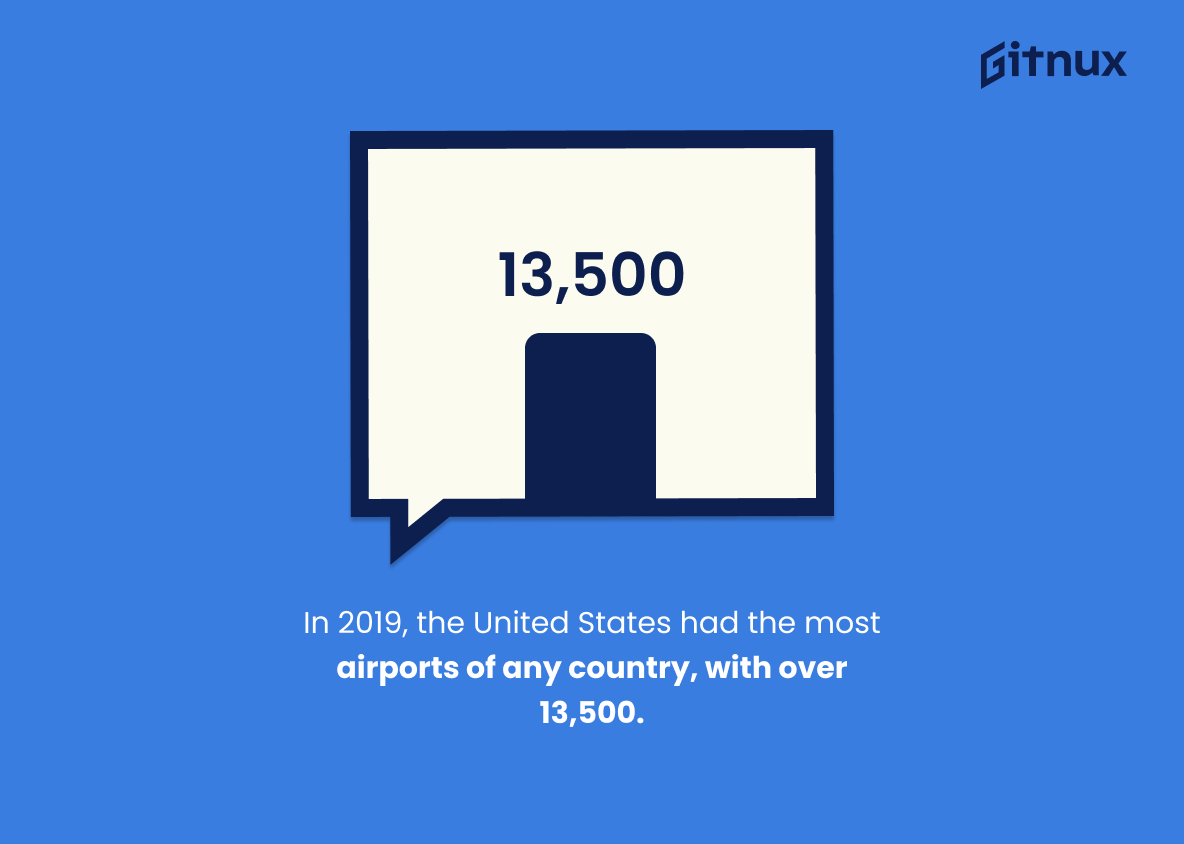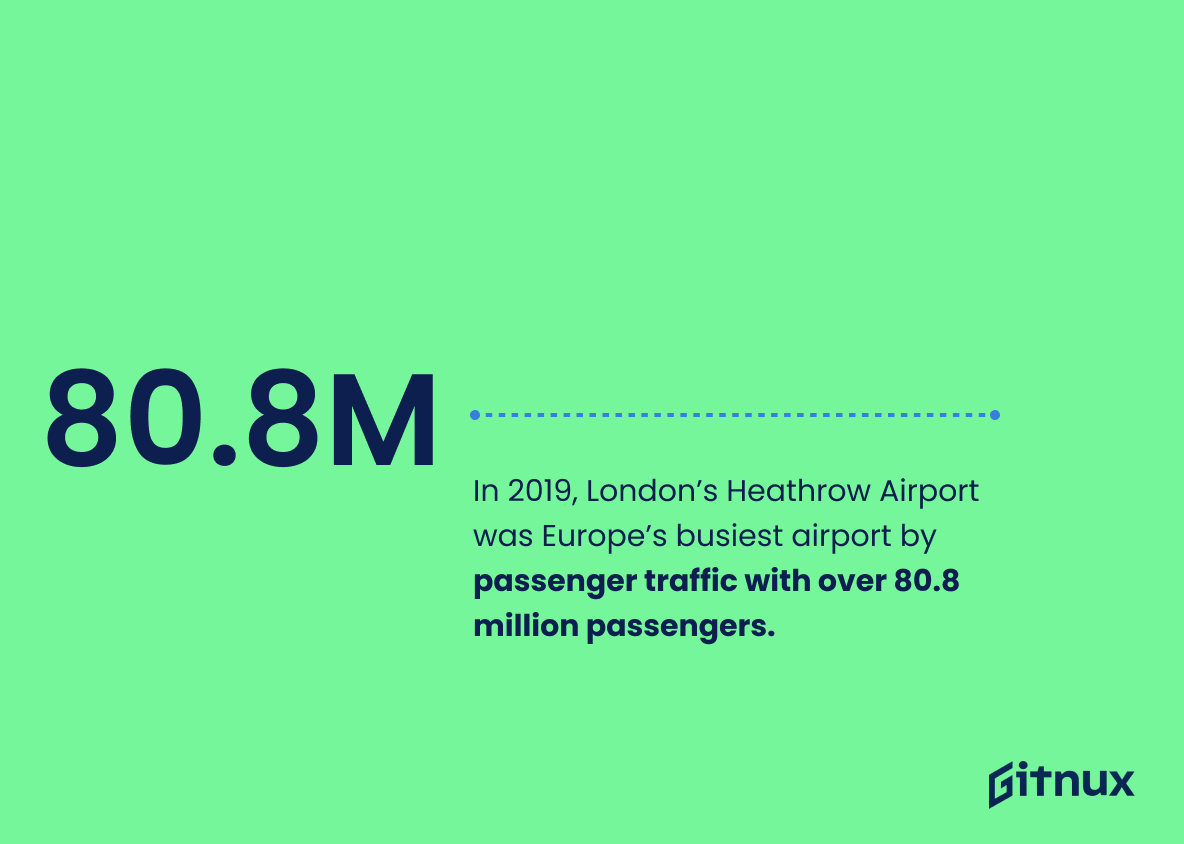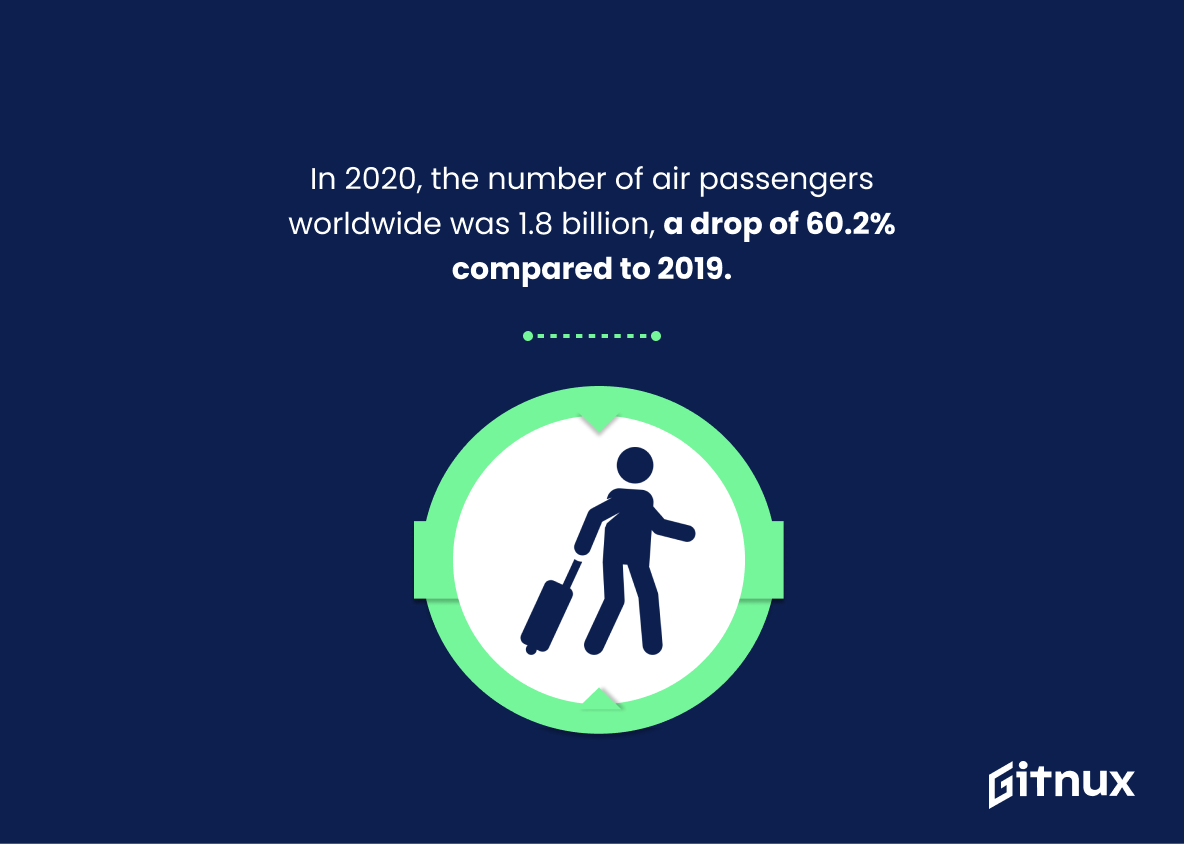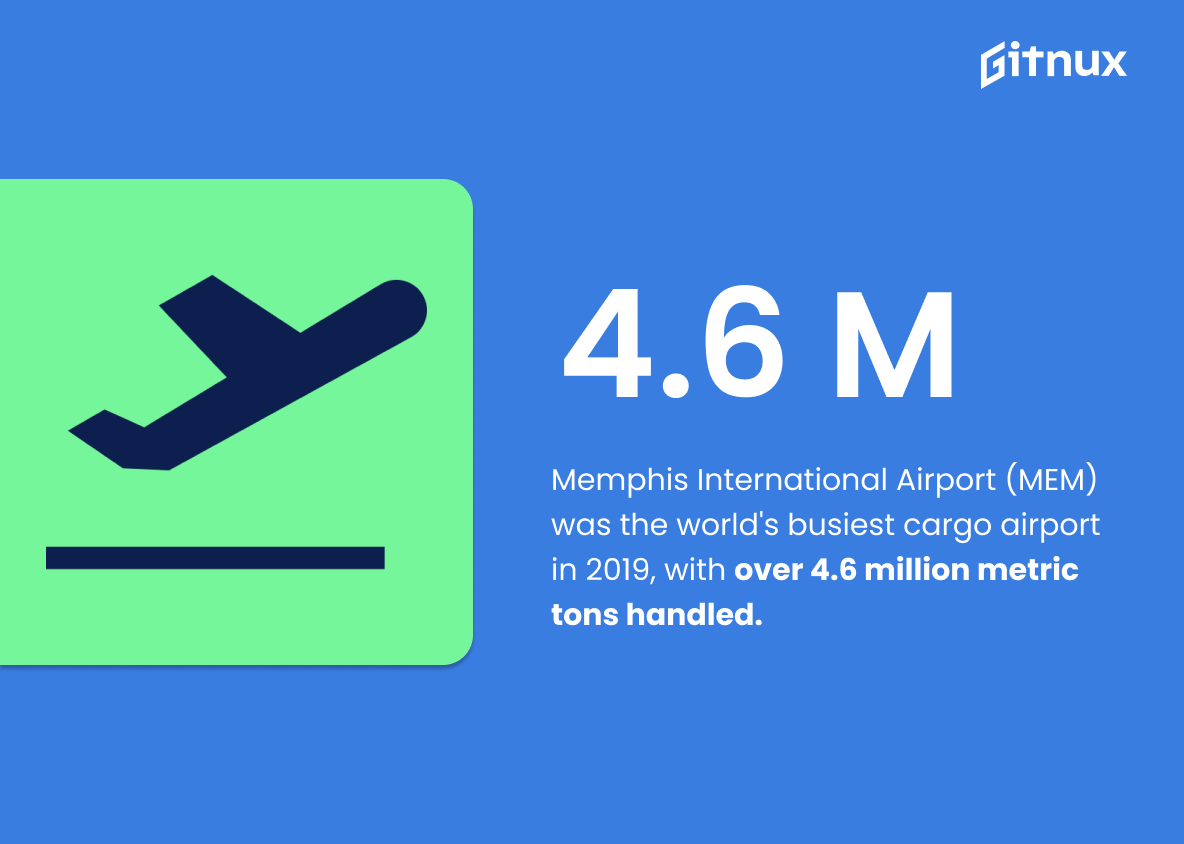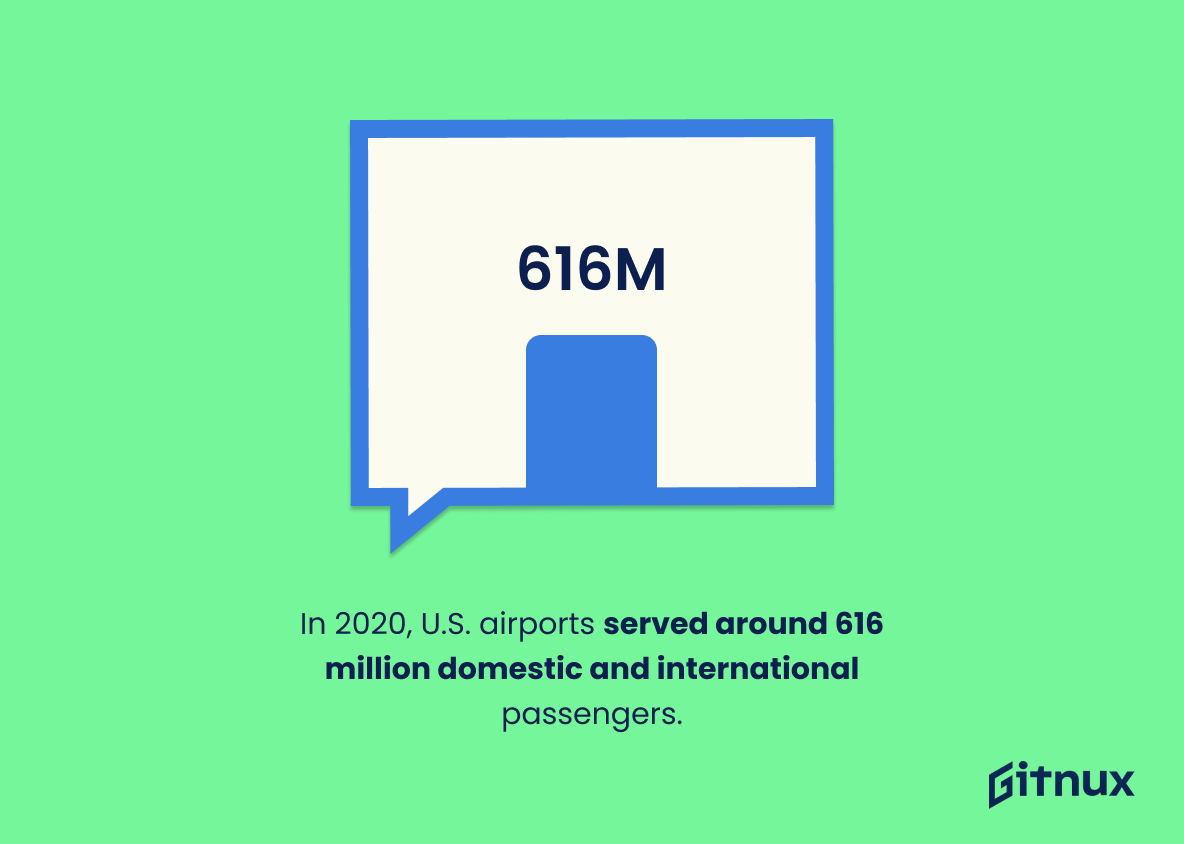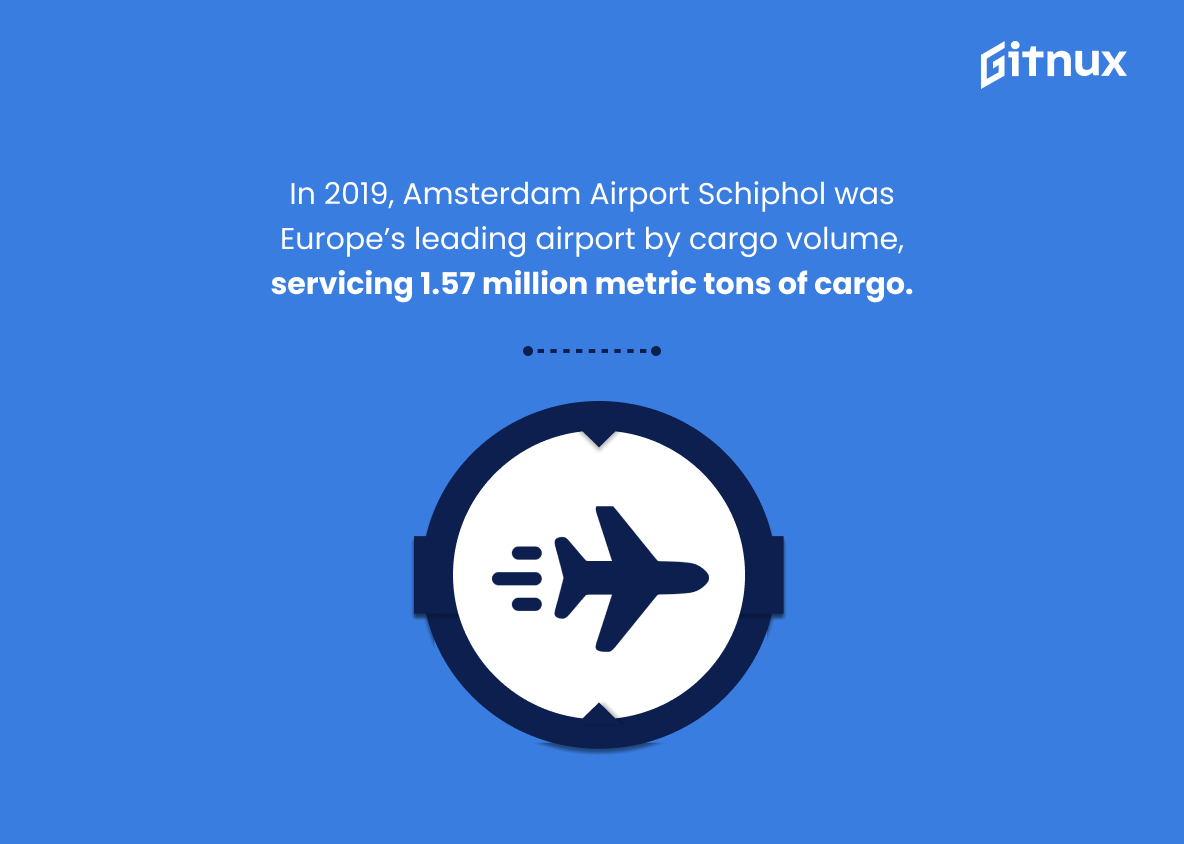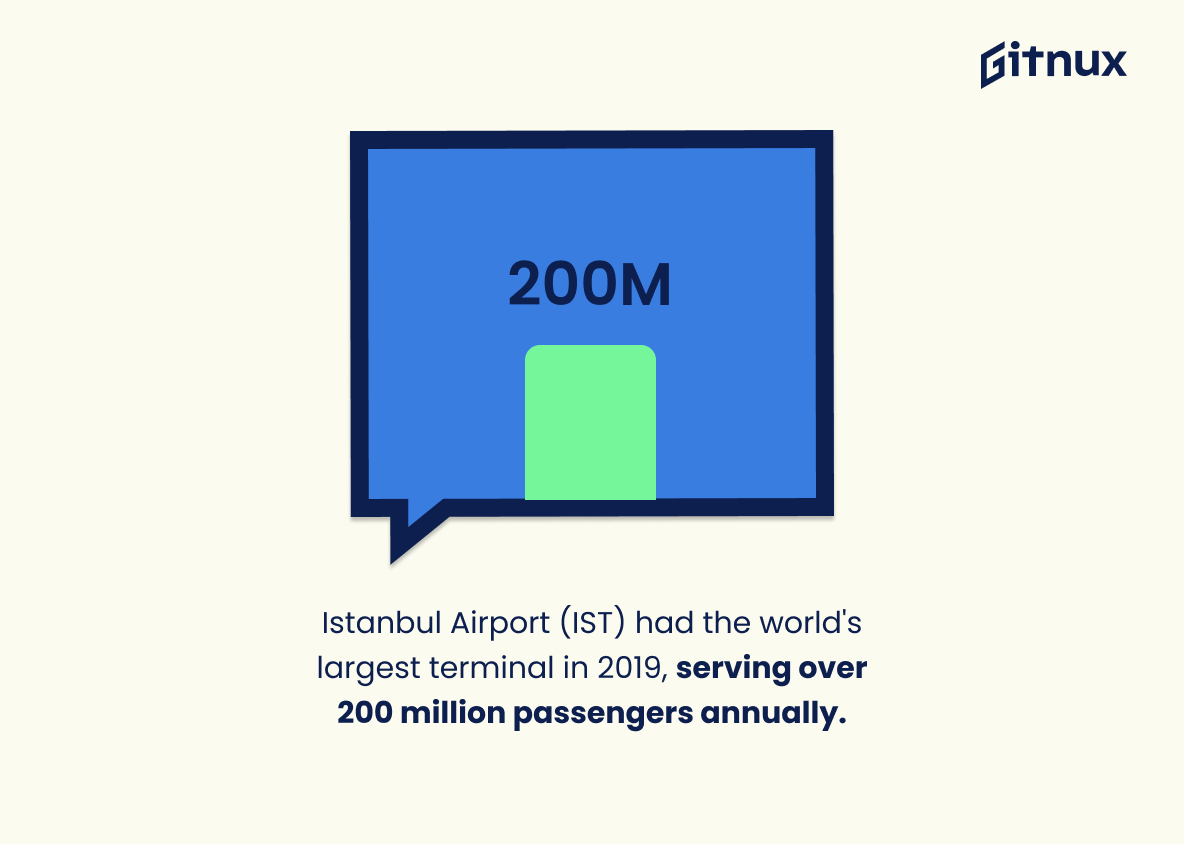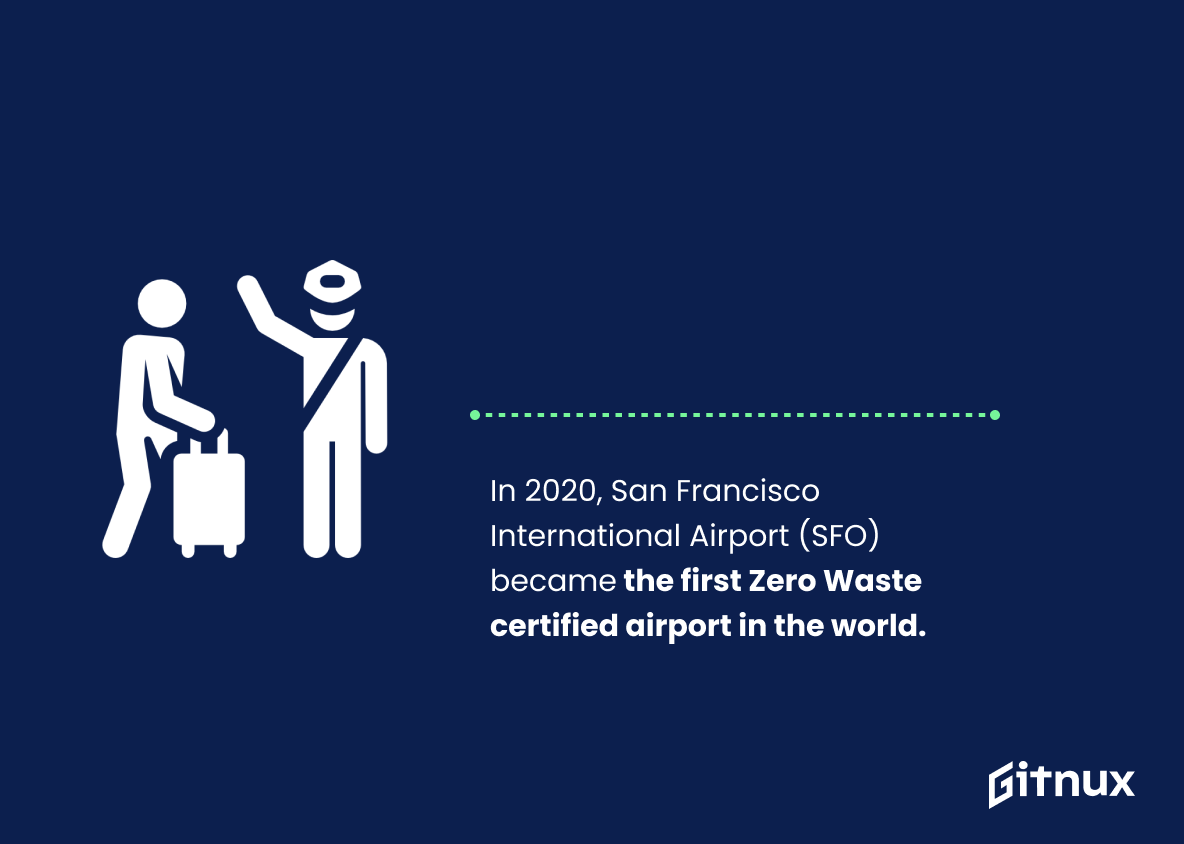Air travel is an integral part of our lives, and airports are the hubs that make it possible. From 2019 to 2020, we have seen a drastic shift in air traffic due to the COVID-19 pandemic. In this blog post, we will explore some interesting statistics about airport operations around the world before and after the pandemic hit. We’ll look at data on passenger numbers, cargo volumes, aircraft movements and more from various sources such as ACI World Data Centre and IATA Global Passenger Survey – 2020 Update. Get ready for takeoff.
Airport Statistics Overview
In 2019, the Hartsfield-Jackson Atlanta International Airport (ATL) in the United States was the busiest passenger airport, handling 110.5 million passengers.
This statistic is a testament to the importance of the Hartsfield-Jackson Atlanta International Airport (ATL) in the United States. It is a clear indication of the sheer volume of passengers that pass through the airport each year, making it the busiest passenger airport in the world. This statistic is a powerful reminder of the significance of airports in our lives and the need to ensure that they are well-maintained and managed.
In 2019, the United States had the most airports of any country, with over 13,500.
This statistic is a testament to the sheer size and scope of the aviation industry in the United States. With over 13,500 airports, the US has the most airports of any country in the world, highlighting the importance of air travel in the US and the vast infrastructure that supports it. This statistic is a powerful reminder of the importance of airports in the US and the impact they have on the economy.
In 2019, London’s Heathrow Airport was Europe’s busiest airport by passenger traffic with over 80.8 million passengers.
This statistic is a testament to the immense popularity of London’s Heathrow Airport, highlighting its status as Europe’s busiest airport. It is a clear indication of the airport’s success in providing a reliable and efficient service to its passengers, and serves as a reminder of the importance of airports in the global economy.
Among the airlines, Delta Air Lines had the highest share of North American passenger traffic at the leading airports in 2020, with 17.3%.
This statistic is a testament to Delta Air Lines’ success in the North American market, highlighting their dominance in the industry. It demonstrates the airline’s ability to capture a large portion of the passenger traffic at the leading airports, indicating their popularity among travelers. This is an important point to consider when discussing airport statistics, as it provides insight into the success of the airline and the preferences of travelers.
In 2020, the number of air passengers worldwide was 1.8 billion, a drop of 60.2% compared to 2019.
This statistic serves as a stark reminder of the devastating impact the COVID-19 pandemic has had on the aviation industry. It highlights the immense decline in air travel, which has had a ripple effect on airports and the people who rely on them for their livelihoods.
In 2019, the cargo volume at the Memphis International Airport (MEM) in the United States was over 4.6 million metric tons, making it the busiest cargo airport in the world.
This statistic is a testament to the importance of the Memphis International Airport (MEM) in the global economy. With over 4.6 million metric tons of cargo passing through its gates, MEM is the undisputed leader in air cargo transportation, a vital component of the global supply chain. This statistic is a reminder of the critical role airports play in the world today, and the importance of understanding the latest airport statistics.
In 2020, U.S. airports served around 616 million domestic and international passengers.
This statistic is a testament to the importance of airports in the lives of millions of people. It highlights the sheer number of people who rely on airports to travel domestically and internationally, and the vital role they play in connecting people to their destinations. It also serves as a reminder of the impact airports have on the economy, as they are responsible for generating jobs and revenue for the local community.
In 2019, Dubai International Airport (DXB) was the busiest airport in terms of international passenger traffic, handling 86.4 million international passengers.
This statistic is a testament to the success of Dubai International Airport (DXB) as the busiest airport in terms of international passenger traffic. It highlights the importance of DXB as a major hub for international travel, and its ability to accommodate a large number of passengers. This statistic is a great example of the power of airports to facilitate global travel and commerce, and is an important factor to consider when discussing airport statistics.
In 2019, Beijing Capital International Airport (PEK) saw a total of 37,722 aircraft movements per month.
This statistic is a testament to the sheer volume of air traffic that Beijing Capital International Airport (PEK) handles on a monthly basis. It is a clear indication of the airport’s importance in the aviation industry, and its ability to accommodate the needs of travelers from all over the world. This statistic is a valuable insight into the airport’s operations and its ability to provide efficient and reliable services.
In 2019, Amsterdam Airport Schiphol was Europe’s leading airport by cargo volume, servicing 1.57 million metric tons of cargo.
This statistic is a testament to the success of Amsterdam Airport Schiphol as Europe’s leading airport. It highlights the impressive 1.57 million metric tons of cargo that the airport was able to service in 2019, demonstrating its ability to handle a large volume of goods and passengers. This statistic is an important indicator of the airport’s success and is a key factor in understanding the airport’s overall performance.
Singapore’s Changi Airport was voted the world’s best airport for eight consecutive years, from 2013 to 2020.
This statistic is a testament to the excellence of Changi Airport, highlighting its consistent commitment to providing the highest quality of service to its passengers. It is a remarkable achievement that speaks volumes about the airport’s dedication to providing a world-class experience. This statistic is a powerful reminder of the importance of airport standards and the value of striving for excellence.
In 2019, Istanbul Airport (IST) had the largest airport terminal in the world, spanning 8 million square feet and serving over 200 million passengers annually.
This statistic is a testament to the sheer size and scope of Istanbul Airport (IST). It is a remarkable feat to be able to serve over 200 million passengers annually in an area of 8 million square feet. This statistic is a testament to the success of IST and its ability to accommodate such a large number of passengers. It is also a testament to the efficiency of the airport’s operations and its ability to provide a safe and comfortable experience for its passengers. This statistic is a great example of the importance of airport statistics and the impact they can have on the success of an airport.
In 2020, San Francisco International Airport (SFO) became the first Zero Waste certified airport in the world.
This statistic is a testament to the commitment of San Francisco International Airport (SFO) to sustainability and environmental protection. It is a remarkable achievement that sets a precedent for other airports around the world to follow suit and strive for zero waste certification. This statistic is a powerful reminder that airports can be part of the solution to global environmental issues, and that with the right dedication and effort, it is possible to make a positive impact.
In 2019, India’s Indira Gandhi International Airport (DEL) was the 12th busiest passenger airport in the world, witnessing a growth of 5.1% in passenger volume.
This statistic is a testament to the success of India’s Indira Gandhi International Airport (DEL) in 2019, as it was ranked 12th busiest passenger airport in the world. This impressive growth of 5.1% in passenger volume is indicative of the airport’s ability to provide a safe and efficient service to its customers. This statistic is an important reminder of the importance of airports in the global economy and the need for airports to remain competitive in order to remain successful.
In 2020, Phoenix Sky Harbor International Airport (PHX) held the title of the friendliest airport in the United States.
The fact that Phoenix Sky Harbor International Airport (PHX) was named the friendliest airport in the United States in 2020 is a testament to the hard work and dedication of the airport staff. It is a reflection of the commitment to providing a pleasant and enjoyable experience for travelers, and it is a great example of how airports can strive to make the journey of air travel as stress-free as possible. This statistic is an important reminder that airports can be more than just a place to catch a flight; they can be a place of comfort and hospitality.
In 2019, airports in the United States collectively handled over 3 billion pieces of mail.
This statistic is a testament to the sheer volume of mail that airports in the United States are capable of handling. It speaks to the efficiency and reliability of the airport system, and the trust that people have in it to deliver their mail safely and on time. It is a powerful indicator of the importance of airports in the United States, and the role they play in keeping the country connected.
Conclusion
Airports are an integral part of the global travel industry, handling billions of passengers and cargo each year. In 2019, there were approximately 34,750 airports worldwide with the United States having the most at over 13,500. The Hartsfield-Jackson Atlanta International Airport (ATL) in the US was that year’s busiest passenger airport while Memphis International Airport (MEM) handled 4.6 million metric tons of cargo to become world’s busiest cargo airport. London Heathrow was Europe’s leading passenger traffic hub with 80.8 million travelers passing through it in 2019 whereas Dubai International Airport had 86.4 million international passengers making it top for international air traffic that same year.
The pandemic has caused a drastic drop in air travel globally as seen by IATA reporting 1 billion fewer passengers than expected for 2020 compared to 2019 figures; however some airports have managed to remain resilient such as San Francisco becoming Zero Waste certified or Phoenix Sky Harbor being voted friendliest US airport this past year despite reduced numbers due to COVID-19 restrictions and lockdowns around the world . As we look ahead into 2021 and beyond these statistics provide insight into how far aviation has come since its inception more than 100 years ago – from humble beginnings when only a handful of planes flew between two cities –to today where millions fly across continents every day connecting people all over our planet.
References
0. – https://www.statista.com
1. – https://www.bts.gov
2. – https://www.data.worldbank.org
3. – https://www.business-standard.com
4. – https://www.faa.gov
5. – https://www.flysfo.com
6. – https://www.aci.aero
7. – https://www.unctad.org
8. – https://www.iata.org
9. – https://www.worldairportawards.com

